Are you looking to start a red chili farm or expand your existing operation? The Guntur red chili is a highly sought-after crop in the global market. It is known for its unique flavor, color, and pungency. As with any agricultural venture, understanding the market, production costs, and potential profits is crucial to success in Guntur red chili farming.
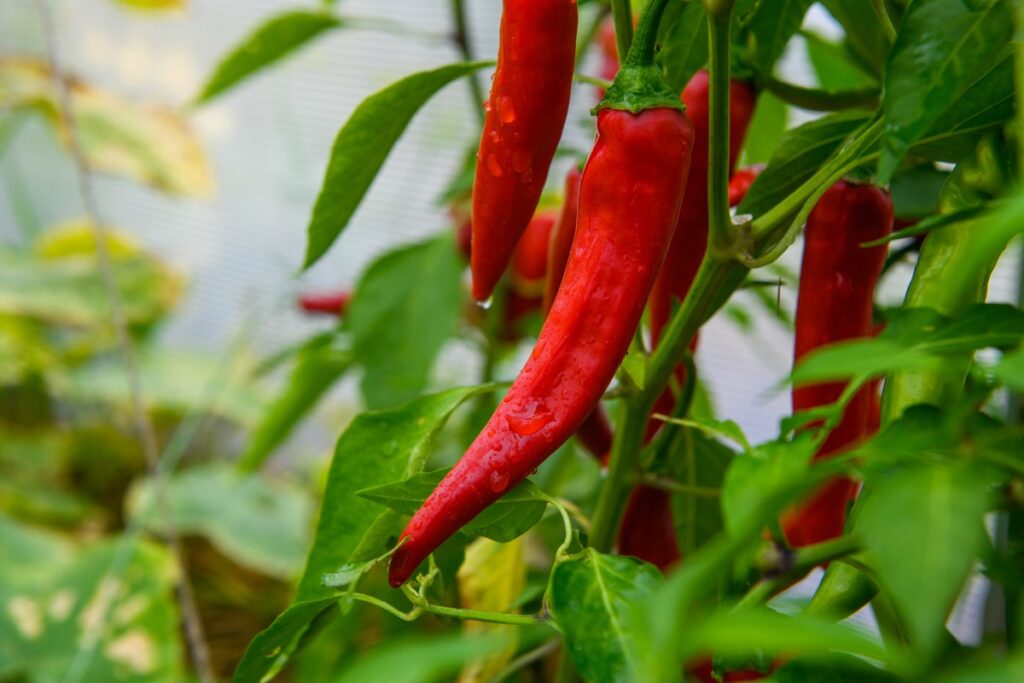
In this article, we’ll take a deep dive into the Guntur red chili farming industry, including market analysis, cost of production and project report insights to help you unlock the profit potential of your red chili farm. We will provide a detailed project report on Red Chilli farming, including information on the cost, profits, and net profits from 1 acre of Guntur Red Chilli farming. Whether you’re a seasoned farmer or new to the industry, this information will be invaluable as you plan and execute your red chili farming venture. So, let’s get started and explore the exciting world of red chili farming!
Guntur red chilli farming project report
What is red chilli farming?
Red chili farming refers to the cultivation of red chili. Cultivation can be done in various ways, including in greenhouses or outdoor fields. Red chili peppers are typically grown from seed and require warm temperatures and Sunlight to thrive. Red Chilli cultivation grows red chili in Andhra Pradesh, India.
The state is known for its high-quality red chili peppers and is one of the country’s largest crop producers. The climate and soil conditions in Andhra Pradesh are ideal for cultivating red chili peppers, and farmers use various methods and techniques to grow the crop. These include using high-yielding varieties, modern irrigation systems, and fertilizers to boost productivity and ensure a consistent supply of high-quality red chili peppers.
In case you missed it: Growing Red Chilli Organically in Andhra Pradesh: Farming Practices and Production Management
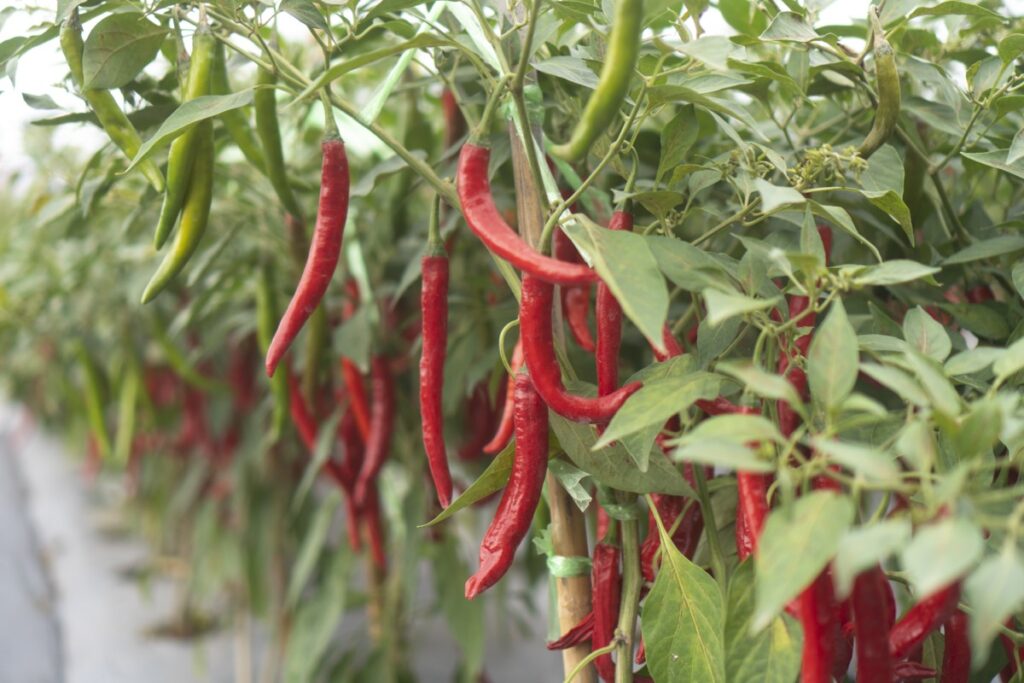
About Guntur red chili crop
The crop is usually sown in June and July as a Kharif crop and in November and December as a Rabi crop. The seeds are sown in nursery beds and later transplanted into the field. The seed rate for red chili is 2.5 kg per acre and 800-1000 gm for hybrid varieties. The ideal temperature for the growth of Guntur red chili is around 30-40 degrees Celsius. The plant requires a lot of Sunlight and well-drained soil.
The first harvest can be done after 95 days of planting, and multiple harvests can be done until the plant stops producing. Guntur red chili ranges from 8 to 10 quintals per acre. Under ideal growing conditions, the yield can be as high as 15 quintals per acre. Yields can be increased using good quality seeds, proper irrigation, fertilizer management, and controlling pests and diseases.
The specialty of Guntur red chili
The Guntur red chili is a special variety of red chili that is grown in the Guntur district of Andhra Pradesh, India. It is known for its unique flavor, pungency, and bright red color. It is considered one of the best-quality red chili varieties worldwide and is in high demand domestically and internationally. One of the main characteristics of the Guntur red chili is its high capsaicin content, which gives it its intense heat and pungency. It is also known for its high yield and disease resistance.
Another Speciality of Guntur red chili is primarily used in Indian cuisine, particularly in Andhra Pradesh and Telangana, where it is used to make traditional dishes such as Andhra-style pickles, chutneys, and curries. It is also exported to other countries for use in various cuisines and as a spice ingredient. In addition to its culinary uses, Guntur red chili is also used for medicinal purposes, as it has anti-inflammatory and pain-relieving properties.
Guntur red chilli market
The Guntur Mirchi Yard is a major trading center for the Guntur red chili and is the largest dried red chili market in Asia. The yard is located in the Guntur district of Andhra Pradesh, where farmers, traders, and wholesalers come to buy and sell the chili. Guntur district in Andhra Pradesh is one of the largest producers of red chili in India, with an annual production of around 300,000 metric tons. The district is known for its high-quality Guntur red chili, which has a unique flavor and is in high demand domestically and internationally.
The area under cultivation of chili in the Guntur district is around 120,000 hectares, mainly under the command area of the Nagarjuna Sagar Project Right Canal. This area is ideal for chili cultivation due to its fertile soil, abundant water supply, and suitable climate. The market prices for the Guntur red chili are also accessible on the National Agriculture Market (NAM) or e-NAM, an online trading platform for agricultural commodities in India.
In case you missed it: High Yield Hybrid Chilli Varieties in India: For Rabi, Kharif, Winter, Summer, and Rainy Seasons
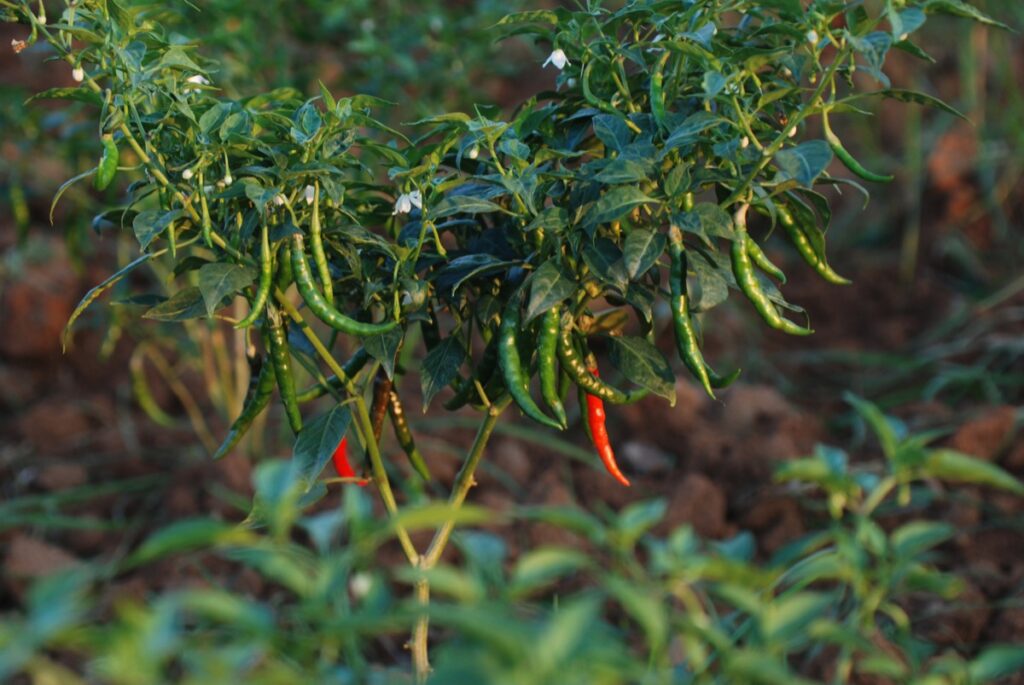
It allows farmers and traders to access real-time market prices for the chili and make informed decisions about buying and selling. The trading place Guntur Mirchi Yard is an important hub for the agricultural economy of the district and the state, generating significant revenue and employment opportunities for the local community. Guntur red chili is exported to numerous countries worldwide, including the US, UK, and China. The export market is an essential source of income for farmers and traders in the district and plays a significant role in the local economy.
Best Guntur red chili varieties and their characters
- S17/Teja: This is a high-yielding variety of Guntur red chili known for its bright red color, pungency, and high capsaicin content. It is resistant to various diseases and pests and is suitable for rain-fed and irrigation-based cultivation.
- Sannam 334: This is another high-yielding variety of Guntur red chili known for its high-quality fruit and disease resistance. It is suitable for rain-fed cultivation and is resistant to leaf curl and wilt, and it is considered one of the best varieties for export.
- Dabbakaya: This variety is known for its large, thick fruit and high yield. It is considered one of the best varieties for making traditional Andhra-style pickles and chutneys.
- Byadgi: This variety is known for its unique flavor and bright red color. It is also known for its medium pungency and good drying properties.
- 334-Hybrid: This hybrid variety of Guntur red chili is known for its high yield and disease resistance and is considered one of the best varieties for export. It is widely used in Indian as well as international cuisine.
Other red chili varieties are The specific types listed include 341/DD, wrinkled, Endo 5, S27/Wonderhot Variety, Warangal Tomato Variety/Chapata Chillies.
Best cultivation tips for farmers for red chilli variety
Growing red chili pepper can be profitable for farmers, especially if they have the proper knowledge and resources. Here are some tips to help farmers achieve a good yield when cultivating red chili pepper on one acre of land:
- Select the suitable variety of red chili: Different varieties of red chili pepper have different growth and yield characteristics. Select a variety that does well in your local climate and soil conditions. The best Varieties are listed at the top.
- Prepare the soil: The soil should be well-drained and have a pH of 6-7. It should also be rich in organic matter. If the soil is poor in quality, consider adding compost, Vermicompost, or other organic matter to improve its fertility.
- Plant at the right time: The best time to plant red chili pepper is when the soil temperature is above 20 degrees Celsius. It typically occurs in late spring or early summer.
- Space the plants properly: Red chili pepper plants should be spaced about 30-45 cm apart, depending on the variety. It will allow enough room for the plants to grow and produce a good yield.
- Water the plants regularly: Red chili pepper plants require a consistent water supply. They should be watered regularly, especially during dry periods.
- Fertilize the plants: Red chili pepper plants require a steady supply of nutrients to produce a good yield. Consider using a balanced fertilizer that contains nitrogen, phosphorus, and potassium.
- Control pests and diseases: Red chili pepper plants are susceptible to various pests and diseases. Regularly check the plants for signs of infestation or infection and take steps to control the problem as soon as possible.
- Harvest at the right time: The best time to harvest red chili pepper is when the fruits are fully ripe and have turned red. Depending on the variety, it typically occurs about 2-3 months after planting.
- Properly store and market: Take care of the produce after harvesting. Properly store the chili pepper and market them in an excellent way to get the best price.
- Post-harvest Management: Dry the harvested fruits in the sun for 2-3 days before storing them in airtight containers. Proper post-harvest management is crucial to maintain the quality of the chilies.
In case you missed it: How to Grow Green Chilli Peppers Faster: Best Tips to Increase Flowering, Fruiting, and Production Yield
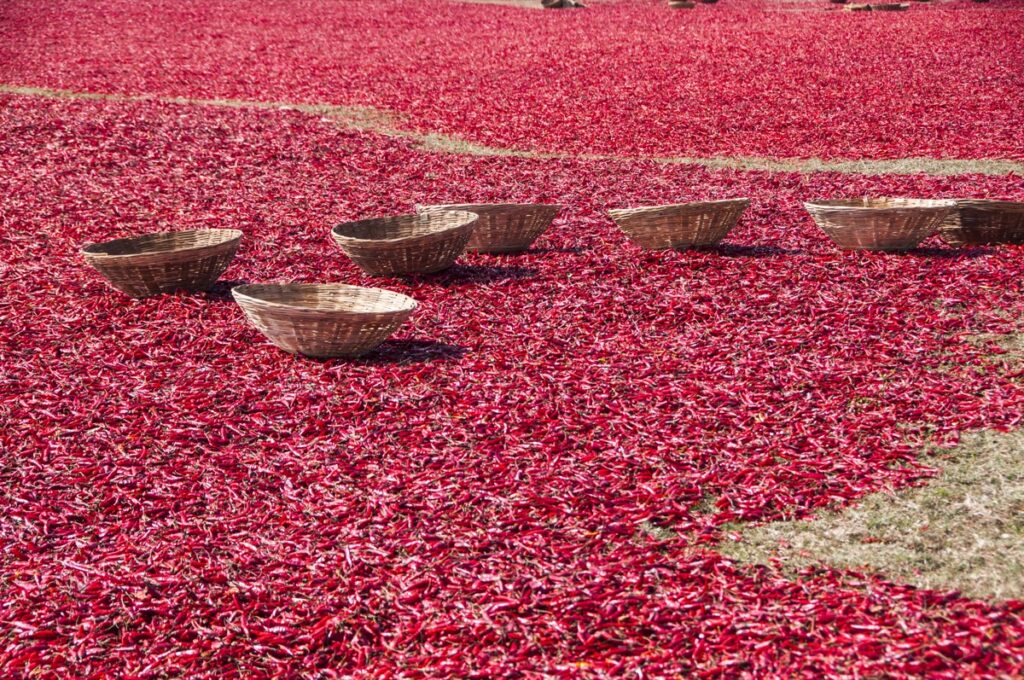
Project report insights on Guntur red chili farming
A project report on Guntur red chili farming would likely provide insights into various aspects of the farming process, including the climate and soil conditions needed for optimal growth, the best practices for planting and maintaining the chili plants, and the potential yields and profits that can be achieved. The report may also discuss the market demand for Guntur red chili and the challenges facing farmers in the region, such as pest and disease control. Additionally, the report may provide information on technology and innovation in farming, such as precision farming and drip irrigation.
The cost of cultivating 1 acre of Guntur red chili
The cost of cultivating one acre of Guntur red chili can vary depending on several factors, including the location, the type of farming method used, and the inputs required. Some of the costs that may be incurred include:
- Land preparation costs: This includes costs associated with plowing, tilling, and leveling the land.
- Seeds or seedlings: The cost of purchasing high-quality chili seeds or seedlings can vary depending on the variety and the supplier.
- Fertilizers and pesticides: These costs will vary depending on the type and amount used.
- Labor costs: The labor cost for planting, maintaining, and harvesting the chili crop.
- Irrigation: The cost of water and energy used for irrigation can vary depending on the method used.
- Harvesting and post-harvesting costs include harvesting and processing the chili for the market.
Some of the factors that on contribute to the cost of cultivation of 1 acre of Guntur Red chili are as follows:
| A seed rate of 2-3 kg, | Rs. 5200 |
| Seed treatment with trisodium phosphate, imidacloprid, mancozeb, and Trichoderma sp | Rs. 750 |
| Plowing costs | Rs. 1,500 |
| Transplanting costs | Rs. 1,400 for two laborers |
| Intercultural operation costs | Rs. 6,000 for two laborers |
| Pesticide costs around | Rs. 3,500 |
| Fertilizer costs | Rs 4700 with a subsidy |
| Rental costs | Rs 13,000 for 1-acre land for four months |
| Harvesting costs of around | Rs. 3,500 for hand picking and 8-10 pickings to get a yield of 15 quintals per acre |
- A seed rate of 2-3 kg, which costs around Rs. 5200
- Seed treatment with trisodium phosphate, imidacloprid, mancozeb, and Trichoderma sp, which costs around Rs. 750
- Plowing costs of around Rs 1500
- Transplanting costs around Rs. 1400 for two laborers
- Intercultural operation costs around Rs. 6,000 for two laborers
- Pesticide costs around Rs. 3,500
- Fertilizer costs around Rs 4700 with a subsidy
- Rental costs of around Rs 13,000 for 1-acre land for four months
- Harvesting costs of around Rs. 3500 for hand picking and 8-10 pickings to get a yield of 15 quintals per acre
In case you missed it: Best Practices to Grow Green Chilli (Mirchi): The Best Guide for Beginners
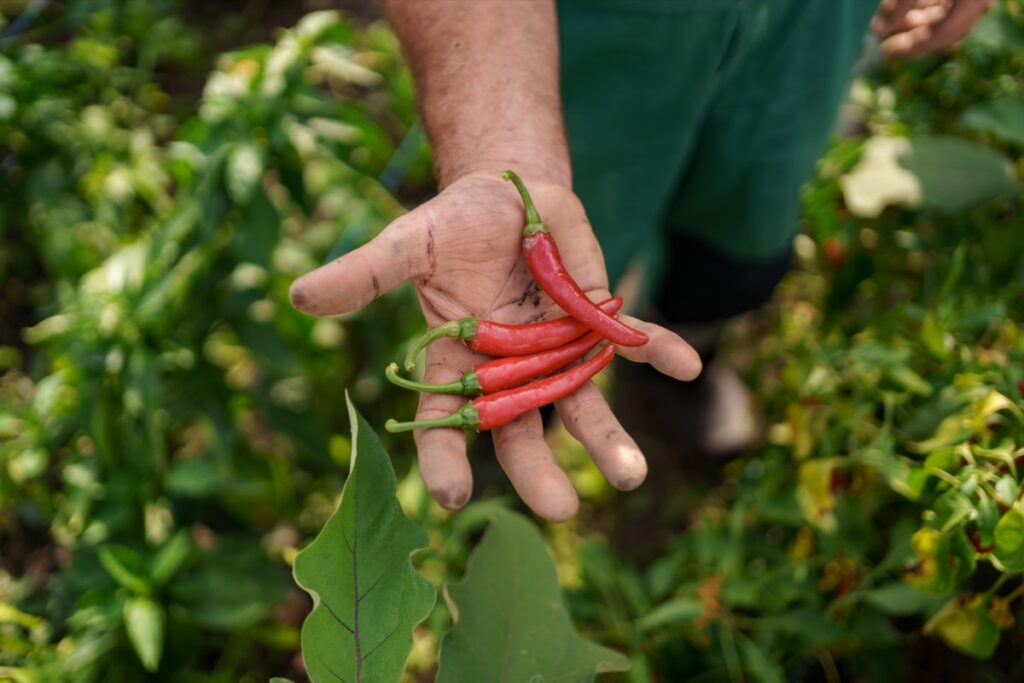
Revenue from 1 acre of Guntur red chili
The profit from 1 acre of Guntur Red chili farming can be calculated by taking the yield and the price of the crop into consideration. With proper management practices, the farmer can expect a yield of 15 quintals per acre. According to the present market in Guntur for red chili, Rs. 12,000 per quintal is the Average price for red chili obtained by farmers in the region over the last two years. If the red chilies are sold at an average price of Rs 8000 per quintal, the total income for the farmer would be Rs 96,000 (12 quintals x Rs 8000/quintal)
Profits from 1 acre of Guntur red chili
The net profit from 1 acre of Guntur Red chili farming can be calculated by subtracting the costs from the profits. The profit from 1 acre of Guntur Red chili farming is Rs 96,000, and the costs associated with cultivating 1 acre of Guntur Red chili is around Rs. 39,550. Therefore, the net profit for 1 acre of Guntur Red chili farming is Rs 96,000 – Rs 39,550 = Rs 56,450. If the farmer follows proper care and management practices, they can earn a net profit of Rs 56,450 from 1 acre of Guntur Red chili farming within five months.
| Particulars | Amount (in Rs.) |
|---|---|
| Seed rate | 52,00 |
| Seed treatment | 7,50 |
| Plowing | 1,500 |
| Transplanting | 1,400 |
| Intercultural operations | 6,000 |
| Pesticides | 3,500 |
| Fertilizers | 4,700 |
| Rental costs | 13,000 |
| Harvesting | 3,500 |
| Total Costs | 39,550 |
| Yield | 12 quintals |
| Average price | 8,000 |
| Total Revenue | 96,000 |
| Profit | 56,450 |
In case you missed it: How to Get Rid of Fruit Fly in Cucurbits: Symptoms, Treatment, Chemical, and Organic Control
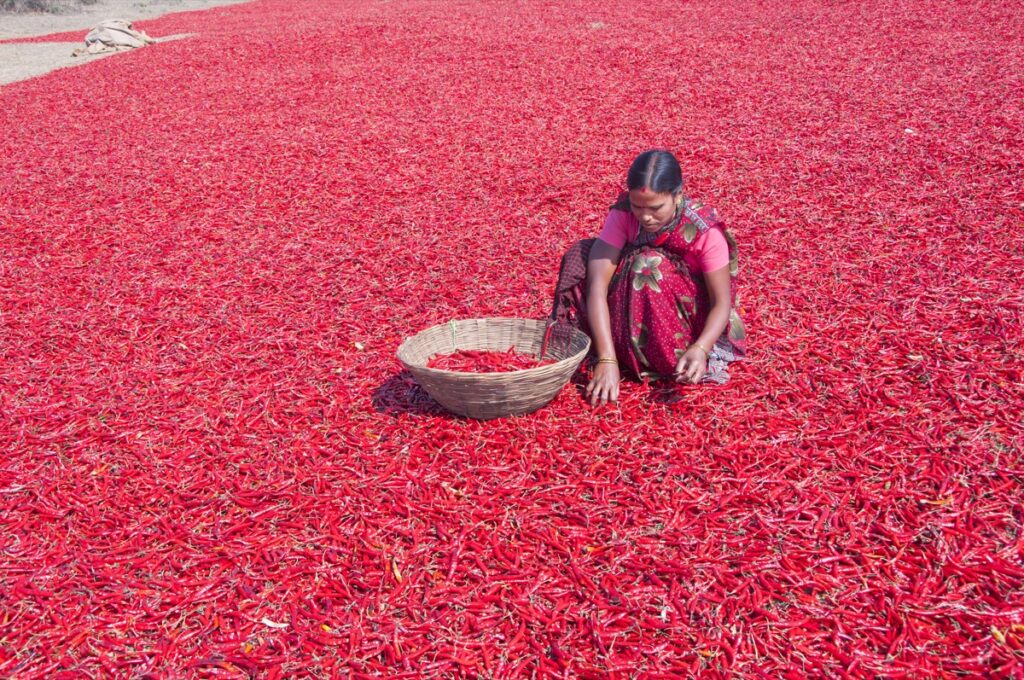
Conclusion
Guntur red chili farming has the potential to be a profitable venture for farmers. A thorough market analysis can provide insight into the demand for Guntur red chili and the possible prices that can be achieved. Production costs, such as land preparation, seeds or seedlings, fertilizers and pesticides, labor, irrigation, and harvesting and post-harvesting, can be high but can be managed using best farming practices and to implement technology and innovations like precision farming use of drip irrigation.
A project report on Guntur red chili farming can provide further insight into the specific challenges and opportunities facing farmers in the region. By carefully considering these factors, farmers can unlock the profit potential of Guntur red chili farming and make informed decisions about their farming operations.
- Management Pests and Diseases in Your Cotton Field
- Sheep Farming Business Plan for Beginners
- Aquaponic Farming at Home: A Step-By-Step Guide
- Profitable Village Farming Business Ideas in 2024
- High-Yield Aquaculture: Fast-Growing Fish for Farming
- Effective Fish Pond Construction Techniques for Beginners
- Irrigation and Water Management in Pineapple Farming
- Blossom to Harvest: Mastering Flowering and Pollination in Papaya Farming
- Pig Fattening Essentials: From Selection to Sale for Beginners
- Raising Wagyu Cattle: A Complete Guide for Premium Beef Production
- Soil Types and Their Water Holding Capacity
- Optimizing Irrigation Schedules for Coconut Groves for Enhanced Yield
- Espresso Your Garden: Coffee Grounds for Healthier Acid-Loving Plants
- The Best Soil Mix for Snake Plants: How to Mix Your Own Snake Plant Soil
- Green Thumb Success: Expert Tips for Cultivating Greenhouse Beans All Year Round
- Bloom All Year Round: The Ultimate Guide to Indoor Hyacinth Care
- Eco-Friendly Gardening: How to Make Liquid Fertilizer from Kitchen Waste
- Ultimate Guide to Grow Anise in Pots: Explore Seed Propagation to Harvesting
- Guide to Raising Chester White Pigs: Discover Breed Facts to Growth Management
- Mastering the Elegance: The Ultimate Guide to Weeping Cherry Tree Care, Planting, and Maintenance
- Ultimate Guide to Planting Garlic in Grow Bags: Growing Strategies for Beginners
- How to Fix Spider Plant Leaf-Related Problems: Natural and Organic Remedies
- 10 Reasons Why Your Tulsi Plant is Shedding Leaves: Home Remedies and Solutions
- Optimizing Growth and Yield: The Advantages of Palm Bunch Ash Fertilizer
- Utilizing Neem Oil Extract as a Natural Pesticide for Hydrangea
- From Soil to Harvest: Various Ways in Which Farmers Can Use AI Tools
- Steps to Encourage and Induce Citrus Flowers: A Comprehensive Guide
- How to Fix Snake Plant Leaf-Related Issues: Natural and Organic Remedies
- Transform Your Garden into a Fragrant Oasis with Raat Ki Rani (Night Blooming Jasmine)
- Discover the Ideal Chicken Breeds for Philippine Farms
- How to Create a Poultry Egg Farm Business Plan for Profits
- Grow Lemon Cucumbers Like a Pro: Insider Techniques for Bountiful Yields
- Ultimate Guide to Caring for Your Pink Princess Philodendron: Tips for Thriving Variegation
- Areca Nut Profit Per Acre: Calculating Yield and Cost of Cultivation
- How Kaveri Chicken is Becoming a More Profitable Breed in Indian Backyards
- Transform Your Barn: 9 Steps to Convert a Horse Stall into a Chicken Coop
